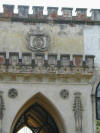Mines on the Danube
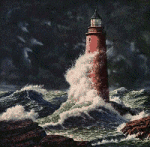
Schneider-Creusot and tug boat ČSPD Tatry
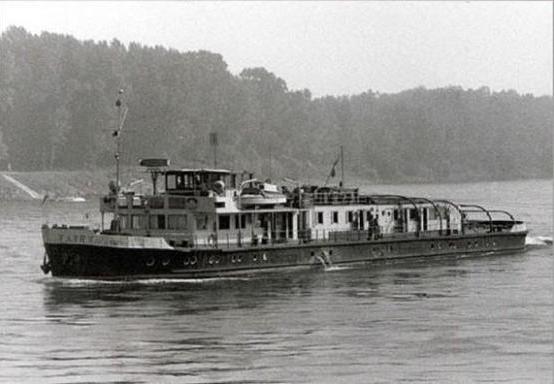
In night in the spring of year 1977 behind big rised level of Danube navigated with convoy in the port Izmail (destination ships of firmČSPD) tug boat Tatry (Captain Oberta). After asidet boats, pass and coll control boatmans draw ship near pontoon. Some boatmans already in the morning came to town for buy nourishments. Author to have in the nigt service, sleep. Maybe in the 9.oclock his wake up with bang in deck his shef 1.machinist Eduard Csáky. Displayed to
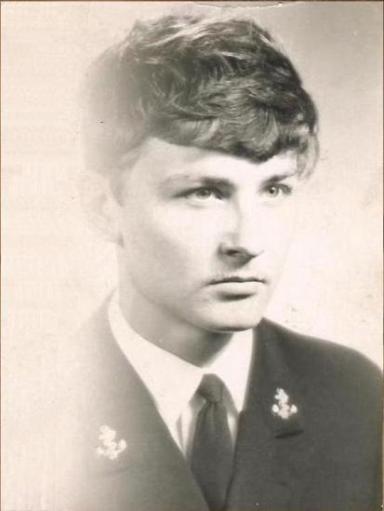
author, big round object, along he buoy, clinched between pontoon and hull of ship. Thrusted to buoy with ships shis (čákla), along shefs so that out flowed. Author to have other opinion and apprehension. Came to do his cabin and direct small iluminator see, it is not buoy, but in diameter 1,5 m big seamine zinc color with typicle feelers of brass and pruduction tablets of French wappe concernSchneider-Creusot. Repel his superiors, what as it dont wohnt drop a to explain and came to nearest stay of soviet borders guard announced with phone to militia event. Before long swim military boat and his leader ratify opinion of autor. Sailors drive out all boatmans of tug boat ŤR Tatry to river-side to big far.
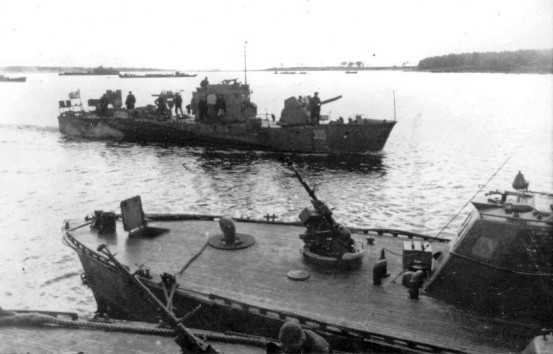
For interferece came maybe 20 meter long, modern minesweeper of Soviet navy with hulls of wood and two quick-firing canones. Boatmans of tug boat Tatry him gived thins wire of silon, in what sailors bundled seamine and upbundled tug boat ČSPD Tatry of pontoon, so that may out flowed in arised gaps. After he slowly tuged behind self to free flow of Danube. There far of river-side shoot to he of canone. When poundet, bulky pole of water to have high minimum 50m.

Soviet war navy Czechoslowakian boatmans danks for cooperation and informed he, that in estuary of river Prut is of II.World war deluged romanian tug with loadted seamines. With high water thoose from time to time up flows. When to boatmans of tug boat ČSPD Tatry wilful untie his ship of pontoon, so that he holdet only anchor and renderet clinched seamine swim between his hull and pontoon endanger not only all low in anchor load and pasager ships, but too lives his boatmans an pasangers. Port Izmail in the left bank in the 93. Port Orlovka, port Kilija and port Vilkovo.
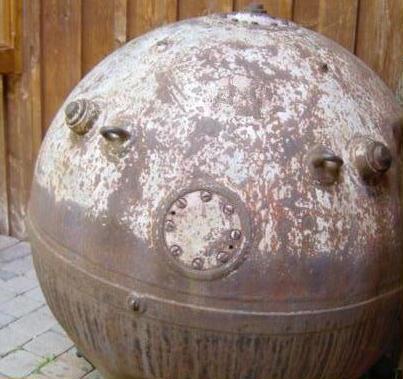
Naval mine produced a French arms company Schneider Creusot. Mine caught between bulkhead tug VMR ČSPD Tatry and pontoon in the harbor Izmail in 1977, has been immersed in water for about as in this picture, where its more rusty part was under water.
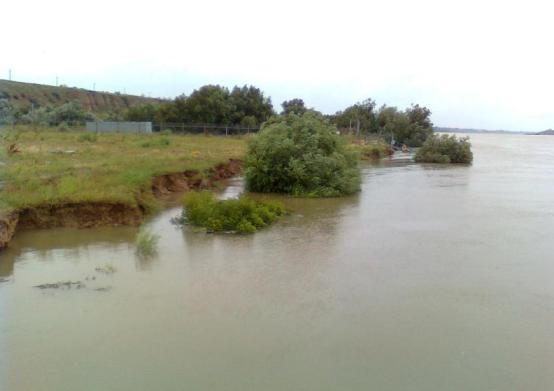
The Danube river sail mine of French origin from the mouth of the the river Prut in the spring of 1977. For the full waterstand of the Romanian sunken of the cargo boat at the time of WW2, transported naval mines produced armaments company Schneider-Creusot.
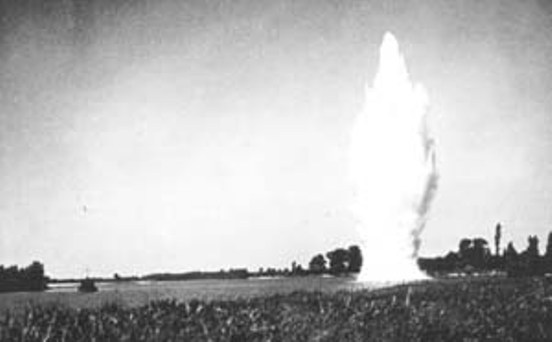
Blast capping mines Czechoslovak army on the Danube below Bratislava in the year 1938. River Danube conect Slowakia with Danubean state and the disburden with him cooperation in industry, transport and foreign business. The potential of the last twenty years of our country towards the middle and lower Danube is not applied to the indifference of so-called business circles unused.
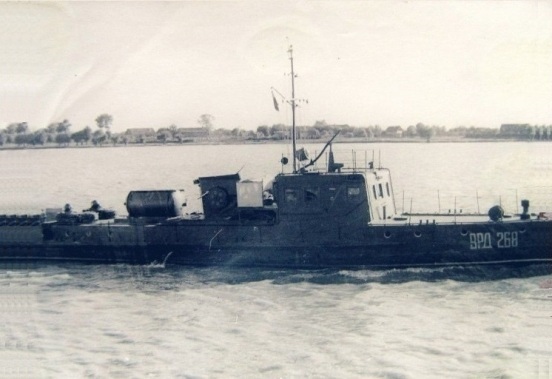
The most modern war ship of the former Czechoslovak Danube Fleet, armoured riverine minelayer OMm 36. From 1939 served as Deutsche Kriegsmarine as Flußminenleger FM 2. Detained in 1940 together with FM 1 of the Danube fleet of Marina Regala Romana in which they served in a row of boats under the name V 6 and V 5. In 1944, as a war booty, they were taken over by the USSR\'s Danube Fleet with its base in Izmail, where it served as "VRD-268" by 1989 without a 48mm turret with two heavy machine guns vz. 37 ZB.
Since 1933, the intelligence services of the States of Litle agreement have signaled to governments a changing international political and economic situation to the detriment of its members. In 1933, the States signed a Litle agreement with the Soviet Union and a Turkish agreement on the definition of aggression. Czechoslovakia, Romania and Yugoslavia participated in the preparation of the so-called Eastern Locarno. After the failure of the plan, Czechoslovakia signed an Allied treaty with the Soviet Union on 16 May 1935 linked to the Franco-Soviet treaty. The SSI, however, already registered the USSR\'s territorial claims against the Romanian Kingdom at that time. In this situation and by the instigation of the government in Prague, the joint appearance of the Czechoslovak Republic and the Romanian Kingdom in an armed conflict with a third party was problematic.
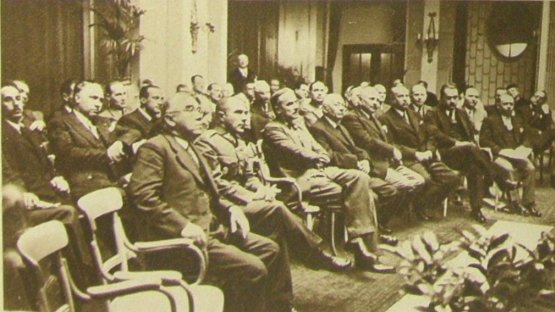
Press Room Litle Arrangements in Bratislava, held just prior to the Foreign Ministers\' Ministerial Meeting in 1936 at the Carlton Hotel.
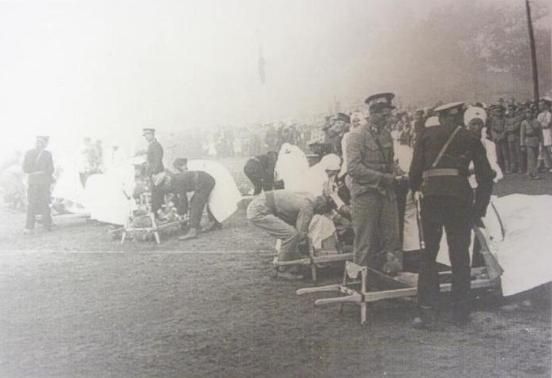
From the thirties of the 20th century, in the case of bombing, natural catastrophes or accidents organized by District Chiefs (in Vráble it was District Chief Stefan Balažovič, a relative of the District Chief in Zlaté Moravce Dr. Aladár I. Ondrejkovič) rescue service with public exams with the participation of the Fire Unity , the gendarmerie, the Samaritan Department of the Czechoslovak Red Cross and the Army.
Pre prezidenta Dr. Eduarda Beneša bola snáď najhoršia zahraničná cesta návšteva Juhoslávie v apríli 1937. Zamýšľal posilniť malodohodový zväzok, ale sa stretol s viac než chladným prijatím politickými predstaviteľmi. Snažili sa návštevu znemožniť, alebo aspoň oddialiť (aj keď celá Juhoslávia bola príjemcom všestrannej československej hospodárskej a finančnej pomoci). Na druhej strane bol búrlivo uvítaný ľudom. V Benešovej osobe videli zosobnenie demokracie ktorú doma nemali. Bola to preňho za osemnásť rokov prvá, okolnosťami a priebehom návštevy veľmi nepríjemná, trapná cesta.
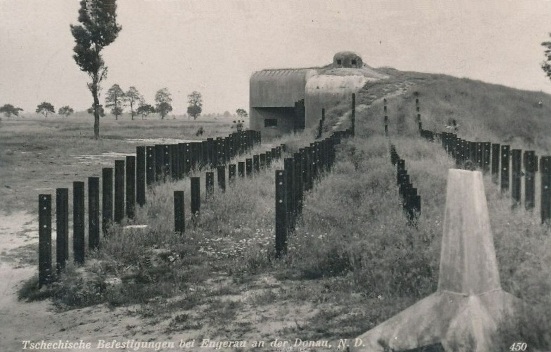
Československé vojenské opevnenia BS-8 v Petržalke - Kopčanoch pri Bratislave na hraniciach s Nemeckou ríšou.
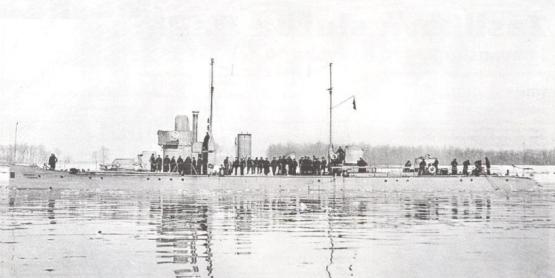
The Czechoslovak patrol ship "President Masaryk" served as a German Navy under the name s/s Bechelaren since March 14, 1939. The Škoda 2x1150 HP steam turbines, 230t, 48.5x6.0x1.0m, 2b,2gt, 18kts, 43p; 10belt, 5deck, 8turrets; 2x2-66/35.
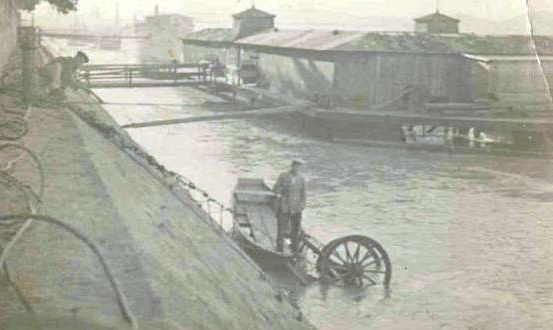
After a training day would go Lieutenant of cavalry Aladár II. Ondrejkovič and young officers at a floating pool on the Danube embankment above the pontoon a propeller. Sometimes swam up to Lido pool of Petržalka, which at that time 1939-1945 belonged to the German Reich. German border guards would not let them out of the water, so swim back. Floating swimming pool was in operation after 1953. Author as a boy he went there to bathe in the summer, despite the cold Danube water. The cold was also where Lido of Petržalka used to come with their parents. Pictured is the swimming pool is enshrined on an old boat Café Boon.
On 01.08.1939, before the start of World War II 09.03.1939, the rafinery Apollo holding company became by buying shares part of the German IG Farben.
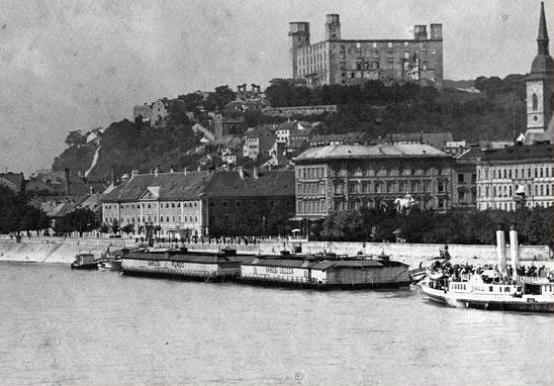
The same floating pools in Bratislava before, 1918. Since the sixties of the 20th century served in the southern winter pool as depot and workshops for boats Danube border guards.
At the end of 1939, the SPD ac. company Bratislava, Grossling 47 was involved 168 self-propelled and non-mobile vessels with a total load capacity of approximately 95 200 tonnes.
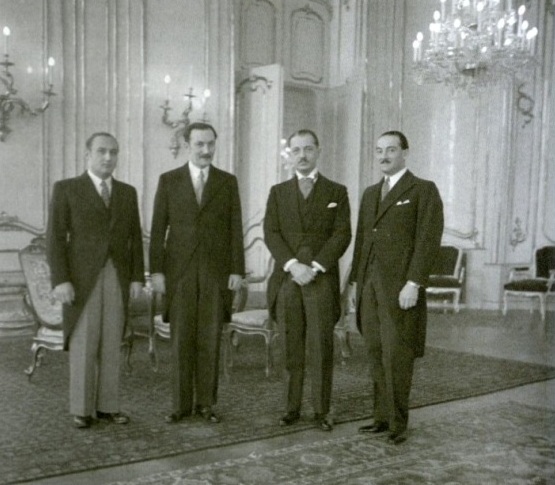
Chief of the presidential office, second of the left, Dr. Anton Neumann, and the third left of Chargé d\'affaires of the Romanian kingdom in Bratislava, Constantin Dinu Hiott, in 1939, in the presidential palace in Bratislava.
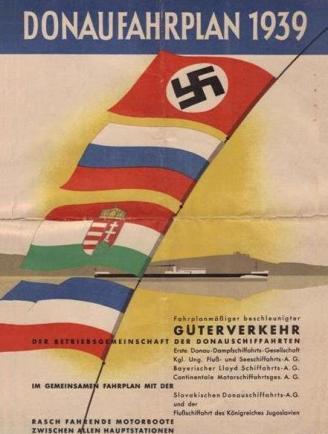
Joint organization of Danube shipping companies after German command on the Danube with coordinated sailing order in 1939.
In the spring of 1940, the Swiss Headquarters for Economic Development (SZH) in Bratislava, Hans Keller of the Carlon Hotel moved to a privileged location in the city center. On the occasion of the official opening of his office, Dr rer pol Hans Keller visited the Town Hall. Chairman of the board of directors of SLS A.C., Chairman A.C., the Chairman of the board of directors of the shipping company Slovak Dunajplavba A.C. (SPD), the Head main town of Bratislava Dr. Belo Kováč helped him with both official and unofficial contacts with influential personalities who provided him with great, especially politically motivated help.
The violent annexation of the territory of northern Romania in June 1940, known as Besarabia and northern Bukovina in our lands, has embraced the forgotten dust. Not in Romania, Moldavia and Carpathian Ruthenia.
Concerns of Bucharest were fulfilled in 1938-1939 by the Munich Agreement, by the 1st Vienna Arbitration and in June and August 1940. In April 1939, the Kingdom of Romania also received guarantees from the United Kingdom and France of its independence and the inviolability of the borders. It did not pay in a year.
The Romanian government has declared that its country has been the victim of Soviet aggression, and Moscow has violated its commitments to Romanian neutrality and self-determination. That was all she could do. The French surrendered on June 22, 1940, the British could not do anything, and when Moscow submitted a Bucharest ultimatum on 26 June 1940 following an attack, the government of His Majesty did not respond. When Kremlin contacted Berlin at that time, he replied: "We agree! ". This is related to the fact that the 2nd Vienna Arbitration on August 30, 1940, Germany and Italy forced Romania to give Hungary half of Transylvania, which has since been called Northwest Transylvania. During August, the Romanian government was also obliged to agree with the Italian request to comply with the territorial requirements of Bulgaria. By the Treaty of Craiova on 7th September 1940 Bulgaria fell into the territory called the Quadrilateral (southern part of the Dobrudzha).
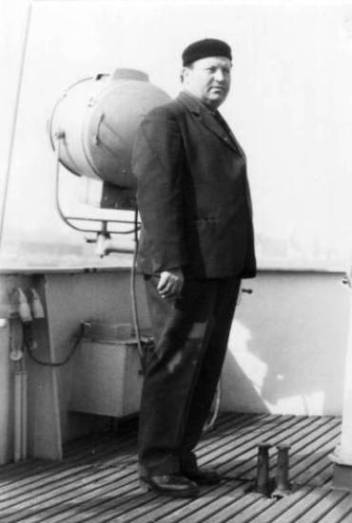
One of the most experienced captains of ships on the Danube Cpt. Alexander Oberta under the command of a brilliant author served for towing ČSPD Tatry. Mr. Captain Oberta came from Orava. He shipman learns the craft as a boy, when such orphan rafts on the river Vah with his uncle. Father killed his horse thieves from Poland when they are surprised at night in their barn. On the Danube started to work on so-called pushers burčels on which sailed from the Danube during World War II. Vol. War and the river Tisza, as few of boatmen Slovak Dunajplavba account. with. Vessels words.
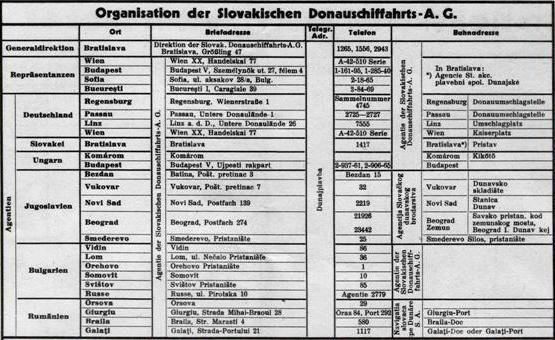
Dunajplavba a.c. (Slowakische Donauschiffahrt A.G.) during the war they were subject to the German command that all load Danube shipping companies and ports boarded the convoy of armed escorts, often with anti-aircraft guns. Armed escort role was defense against the Allied Air Force throwing mines in the fairway of the Danube River. Captain Oberta nasty commander Cpt. Haššik of Dlhé Pole, a former teacher (a distant relative of the County notary Rudolf Mičura and President of the Supreme Court JUDr. Martin Mičura), but also a very experienced captain.
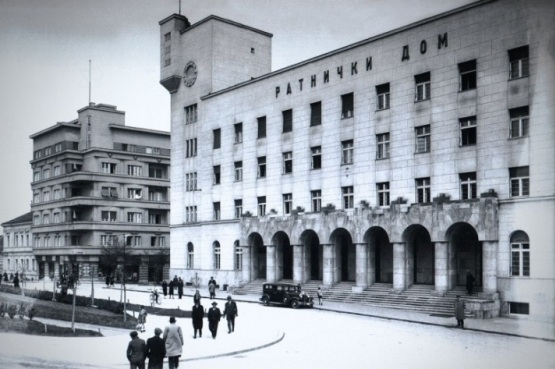
Ratnički dom in Belgrade (Military Home). Under its cover, in April 1941, the branch of the 2nd departments of the Czechoslovak army headquarters for the resistance of the important cooperation of the employees of the Slovak Dunajpavba account. comp. and the local community of citizens of Yugoslavia of Czech and Slovak nationality. Her important member was editor of nawspaper "Lidové noviny" Andrej Vrbacký.
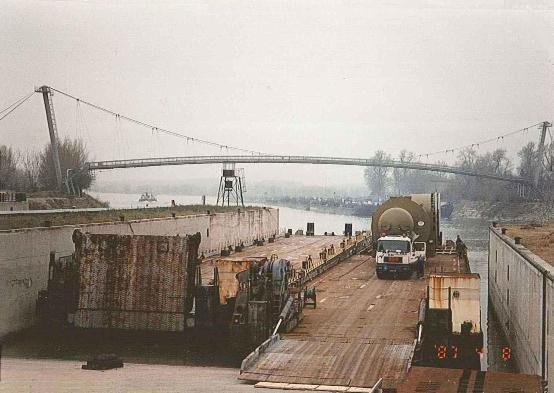
Even members of the Council for Mutual Economic Assistance united in the Danube Commission in the years 1970-1989 were trying to set up joint Logging resort in order to minimize non-productive downtime and utilization of the hold vessels. For myopic obstruction of some of its members it until 1989 succeeded only partially. Barges RO - RO were built for ČSPD n.C. in Romanian shipyard for that purpose. Delivered in the context of debt redemption of Romania and the Czechoslovak state property transferred free of charge ČSPD N.C.
For Switzerland, the exchange of goods from Slovakia has an extraordinary importance. More and more important supplies from Slovakia have become sugar, malt, food, wood, cement, chemicals and since 1942 also mineral oil due to loss of suppliers. Swiss spare supplies from Slovakia helped in great need. For example, diesel for locomotives, without its supplies threatened to stop Swiss rail transport, or oil for spindles of the Swiss textile industry, the price did not play any role. Slovakia imported oil and mineral oils from Romania on the Danube exclusively for its consumption. In the Romanian Danube port of Giugiu, it was loaded with motor tankers and tugs of the shipping company Slovak Dunajplavba A.C. (SPD) and transported to the port of Bratislava. They were processed by their refinery Apollo in Bratislava and the Dubová refinery. In the year 1942, the Slovak Republic imported the Danube from Romania Kingdom 151 219 tons of mineral oil.
_____130455881274.220613_164702_23.jpg)
Mines Schneider-Creusot at the base of La Flotte française à Toulon 27. novembre 1942. Admiral Jean de Laborde used them in the sinking of its own fleet.
_(1).120715_065701_23.jpg)
Minister of National Defence, General I. cl. Ferdinand Čatloš and SLS chairman (and CEO of the Slovak Dunajplavba A.C.) Chief mayor of Bratislava Dr. Belo Kováč at the airport Vajnory on May 16, 1943 at the opening of scheduled flights to Prešov.
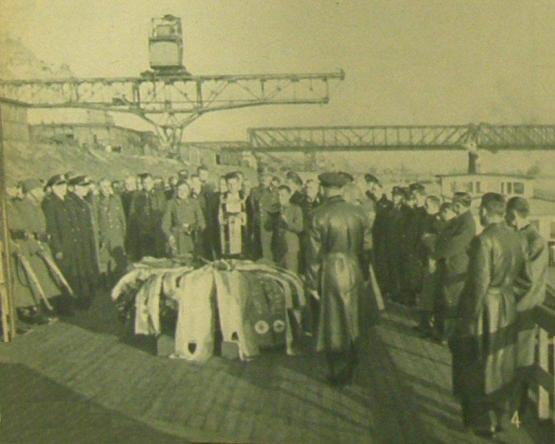
Settlement of the Wanderers on the River Danube on October 24, 1943 in the port of Bratislava in the memory of the men who perished in the performance of their work on the river with the participation of captains, engineers and leadership of SPD A.C., Commandments of the Slovak Army, Catholic Church, township Stefan Turba and District governor of Bratislava.
In the upcoming most demanding period for the performance of the office from 03.05.1944 to 06.04.1945 was the Mayor of Bratislava attorney Dr. Štefan Ravasz (Protestant of the President of the Supreme Court, JUDr. Martin Mičura and his Eminence Archbishop Karol Kmeťko, was a relative of the Sandor de Szlavnicza and Ondrejkovič families), who took over the functions of the SLS A.C. and SPD A.C. The Burgess was Stefan Turba director of Posts and Telegraphs, husband of Maria Turba born Ondrejkovič and brother of Maria Ondrejkovič born Turba.
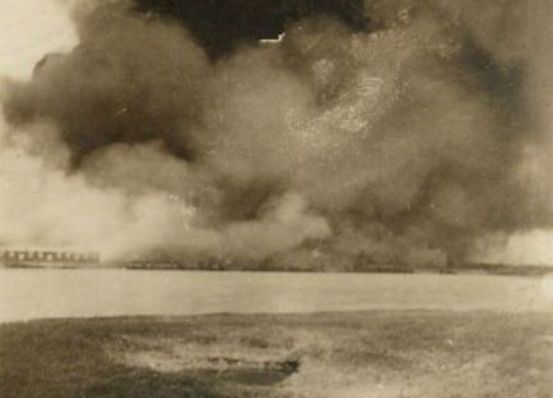
Apollo a.c. refinery burning an image of Ovsište (Three belonged to the German Empire) after the bombing on 16 June 1944, right at the port of smoke enveloped House boatmen.

Old House Boatmen after the bombing 16 June 1944. She set him holding company Slovak Dunajplavba a.c. in the years 1940-1942. Its designer was architect Julius Lehocký. Same time created after 1973 he worked in the office on the ground floor in the left. After 1993 had an office on the ground floor on the other side of the building, and the first and second floors.
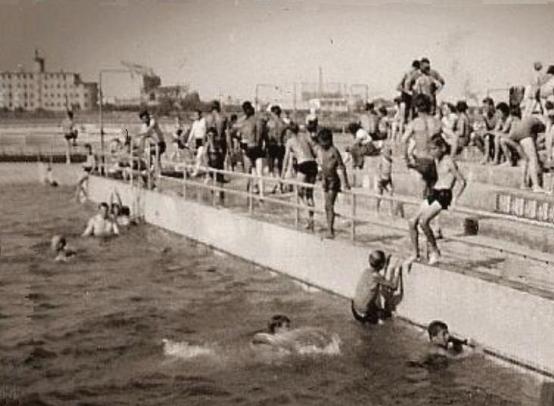
The Lido swimming pool and a view of the Old House of the Shipowners in port Bratislava on the second bank of the Danube around the year 1958.
_____k__pia_____reference-08-03.81017_212344_23.jpg)
A cargo motor tanker Štúr from SPD A.C. sailing to the Winter Harbor after unloading 500 tons Romanian diesel from rafinery Astra Română S.A. of Giurgiu resigned SPD A.C. for SBB-CFF-FFS.
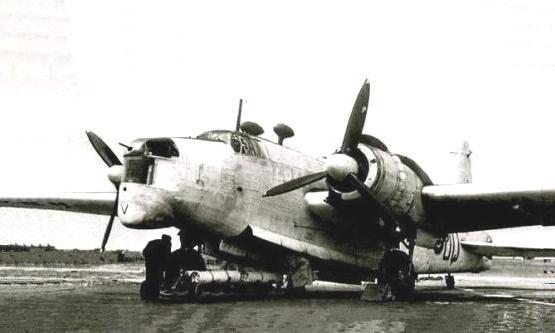
At night in the fairway the Danube steal Allied bombers mines. If exploded under the ship, few of her crew was rescued. Therefore, during the voyage crew stayed on superstructures. For example, machine crew served the engine room skylights.
At km 1519 on the Hungarian section of the Danube at the village of Foktő under the town of Paks was 07.08.1944 explosion mined sunken motorized cargo ship M-IV of the shipping company Slovak Dunajplavba SPD account. company Bratislava on power 450HP and load capacity 500 tons.
Between the port border towns of Bezdan and Mohács at km 1430, in September 1944, the explosion of the mined sunken steam tug R-III (former steamer Vltava ČPSD) of the Slovak company Dunajplavba SPD A.C.
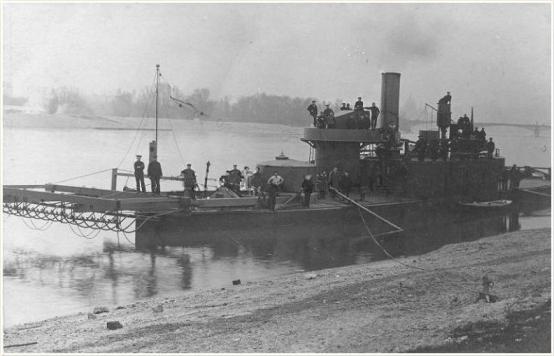
Pictured monitor SMS Szamos the mine clearance equipment (in 1919 was deployed in battle the Hungarian Soviet Republic against Czechoslovak Republic). In autumn 1944 towed Hungarian warships in battles in Moldava damaged patrol ship Bechelaren to Budapest.
Under the Novi Sad on the Serbian section of the Danube over Krsedin village at km 1215 was the explosion mined the sunken steamed tug R-IV (former steamer Dyje from ČPSD) of the shipping company Slovak Dunajplavba SPD a.c.
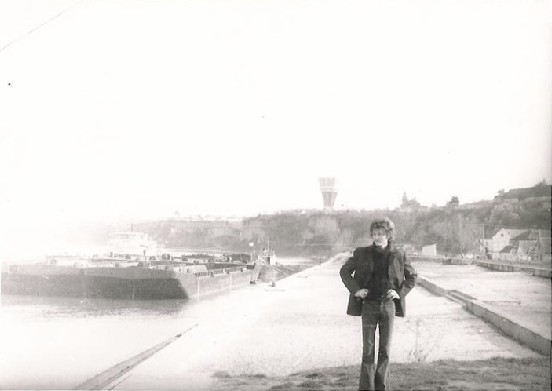
Author in Port Vukovar in 1977, water tower tower at the back. In 1991, in JNA artillery fire from the left bank of the Danube, cannons were fired by volleys just over the ČSPD ŤTR Lipno, TR Gemer and TR Inovec ships in these places as well. Artillery shells hit the shore and buildings on the right.
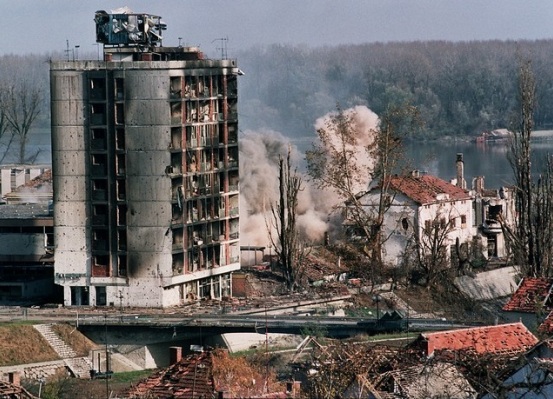
We were worse from our older colleagues, such as the Captain Alexander Oberta ? There somewhere behind the smoke from the explosions of artillery grenades floats the convoy, the Captain Jaško ČSPD ŤTR Lipno, TR Gemer and TR Inovec. Pictured from left to right, close to right bank. From the house on the right under the fire The local citizens showed us with their gestures with their fingers on their foreheads. And what about them ? We didn\'t give them back on courtesy.
Captured s/s Bechelaren Czechoslovak patrol ship "President Masaryk" operated in Germany Services reconstructed early 1944 as the leading boat in the Middle Danube Novi Sad betweeen Moldava. Its Steam Turbine 2x1150 HP were replaced by 2x900 hp diesel engines and was replaced the main armament of two 88 mm cannons.

Original quality guns 4 × 66 mm L/35 Skoda model. 30 (4 x II) with a lower muzzle velocity and range of the 12,500 M was also used against aircraft, not to not have ammunition. They are suitable for shooting top group of angles.
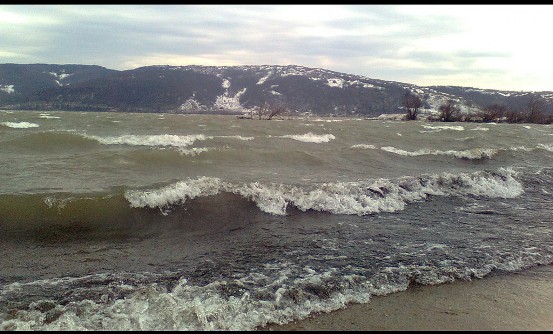
ČSPD Tatry caught in 1977 in a very strong Košava upstream navigation in Bazias.
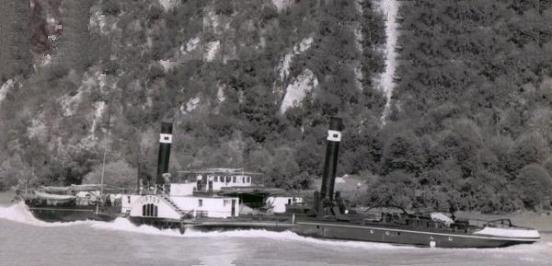
Cataract Tug of the Danube Ships Company of the ČSPD National Enterprise. Steamboat Liptov during a cruise full of power in Little Kazan before 1966.
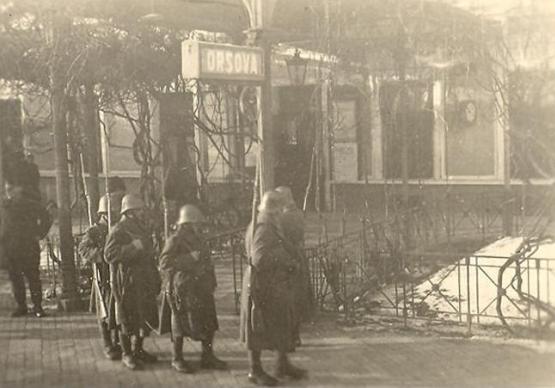
Romanian military patrol in the Orșova port city on the Danube river 1941-1945. Orșova in km 954 is situated just above the Iron Gates. In the Orșova had Czechoslovak Danube Cruise agencies in the building has been owned since its incorporation in 1922. In this building there was also a hostel for the Romanian staff to track (pilots, bargee pilots, pullets and cooks were employees ČSPD n.c., to wit in the years 1939-1945 Slovakian Dunajplavba a.c. and highly appreciate it) disused hydroelectric power Djedjap 1 into operation in the year 1970.
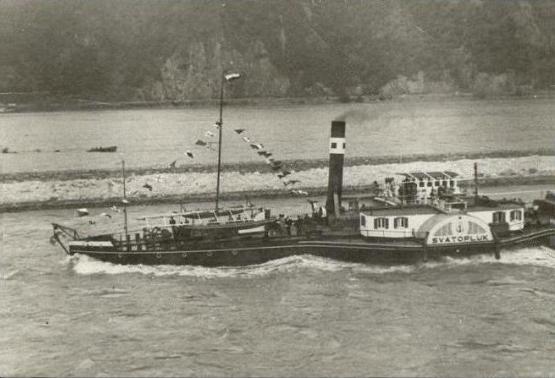
Tugboat Svätopluk on the Danube river km 943.2 to 949.7 in the Sip channel. In the background on the old waterway to the left is seen sunk, foundered on the rock of the Hungarian barges. Very dangerous is the old waterway could only swim at high water level of the Danube. Steam tug Svätopluk of Slovakian Dunajplavba úč.comp. it was damaged by fire 25.08.1944 Soviet and Rumanian artillery in countercurrent sailing near Tekija on the basin Oršava Danube river km 956 and arrested as a Soviet war booty. After 1945, with ČSPD n.p. He swam under the name Orava. Unsuccessful attempt was accommodating breakthrough warships from Moldava and artillery duel monitor s/s Bechelaren (former s/s president Masaryk) with the Romanian batteries. He was well armed, but its structure to have thin armor. Demoralizing the crew was that the Romanian artillery shells with good penetration and a high muzzle velocity of their interventions overshooted through and through, but at least did not burst into the vessel (heavily damaged pulled Hungarian warships to Budapest).
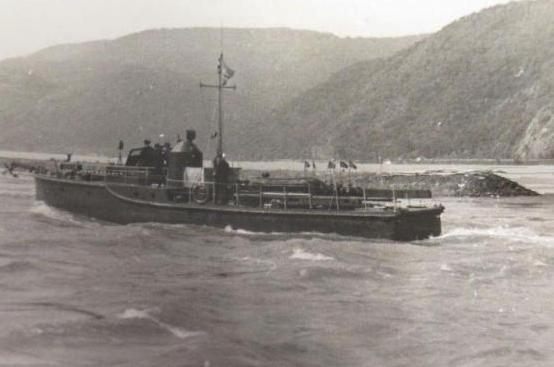
Smaller German military river craft armed with light machine guns in armored station at the mouth of the Sip channel.
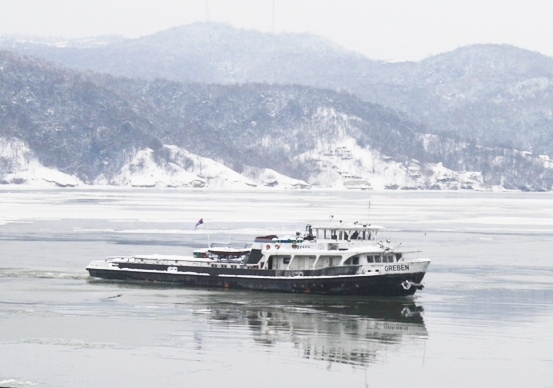
Yugoslavian motor tug JRB Greben of port Kladovo was in 1965 the strongest on the Danube. Upstream to Sip channel came with three boats to 1,000 tons towing ropes without the help of locomotives. Turbines turbocharged engines rushed him at such a rate that hovered like a motorboat. It could no boat on the Danube. When the boats are passing were loaded on board opposite convoy from half-meter waves. After putting hydroelectric Djerdjap 1 was in operation for the high dive deployed to Danubeans session. Wear for main engines but never showed his former strength.
In Turnu Severin refueled opposite flow ships fuel (buy food and water, because the crew barges and tank vessels did not have refrigerators), turns track personnel (priberali katarakt pilot and bootpilots and hand over part of the convoy katarakt tugboat for sailing through Sip channel. The remains of the bridge of the Roman emperor Trajan was long 1,127 mA was 20 columns are rieč.km 929. on the right bank of the Danube river is Brza Polanka to river. km 884th.
Shipyard, port and town Drobeta Turnu Severin in 931.1 km (place often kossova, Head agentie of ČSPD n.p. with dormitory changed navigators for the Lower Danube in a luxurious villa of the former Romanian boyar). According to the testimony helmsman Messing of T-V author in 1965,
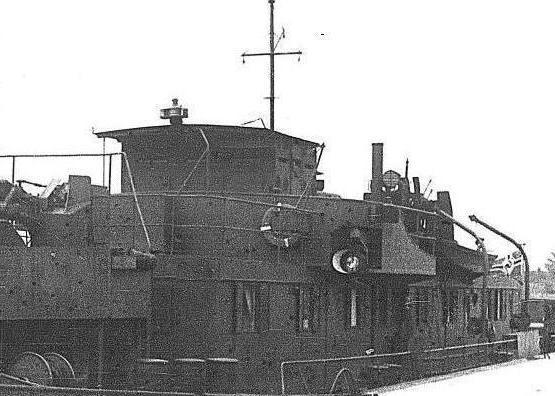
here during WW2. war load in opposite flow ships by crane armor steering, which after cross Iron Gate handed over to the Romanian port of Moldova. He protects the wheelhouse, as throughout the war, the German army failed to prevent the shooting of Yugoslav Partisans of inaccessible rocky banks of the Danube cataract tugs, barges and other vessels Danube. After deposing Marshal Antonescu August 23, 1944 in Turnu Severin he dislocated romanian army canons and shooting bloced transit Cataracts not only the German Danube and the Black Sea fleet, as well as Slovak and Hungarian fleet.
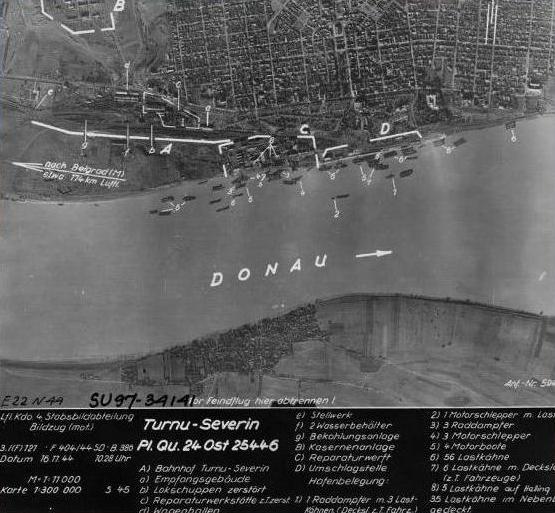
The bombing of the city and port of Drobeta Turnu Severin on April 16, 1944.
In the Romanian-Bulgarian section of the Danube at km 531 at Petrosani, the explosion mines the sunken motorized cargo ship M-III of the shipping company Slovak Dunajplavba SPD. power output 450HP and load capacity 500 tons.
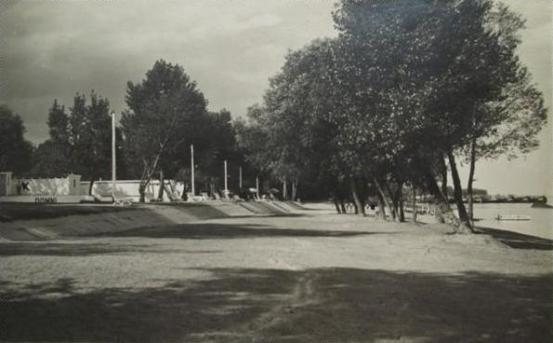
The fixed anchor reserved for tankers in the Romanian lower Danube port of Giurgiu.
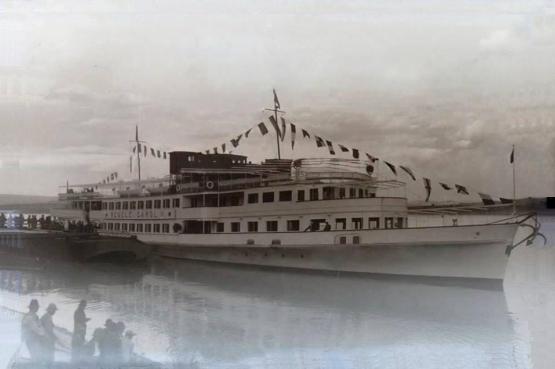
Passenger ship of Romanian state shipping companies NFR " Regele Carol II " was built in the shipyard of Turnu Severin. The ceremony put into operation in 1936, attended by King Carol II Romanian and President Dr. Eduard Beneš. It was the largest river passenger ship in Europe. After the yar 1940, he served as a hospital and transport ship able to carry up to 1,000 passengers. Renamed the "Mihai Viteazul" was sunk on 27.05.1943 in 49th M.m
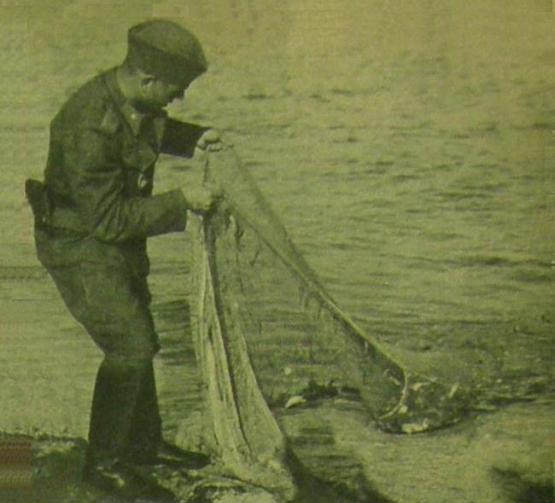
Fishing in summer 1943 by soldiers of the Slovak Rapid Division on the Black Sea coast of the Crimea.
In the autumn of 1943, the Axis units on the Dnieper River with the Soviet Army lost the cargo ship steamer Váh of the shipping company Slovak Dunajplavba SPD a.c. Bratislava on the output of 280HP and a load capacity of 500 tons. With its convoy of towed boats, it transported the freight allocated by the "Danube Shipping Operations Association" in Vienna (Betriebsgemeinschaft der Donauschiffahren in Wien) through the SPD a.s. Directorate and its radio sailing station at House Sailors in port Bratislava.
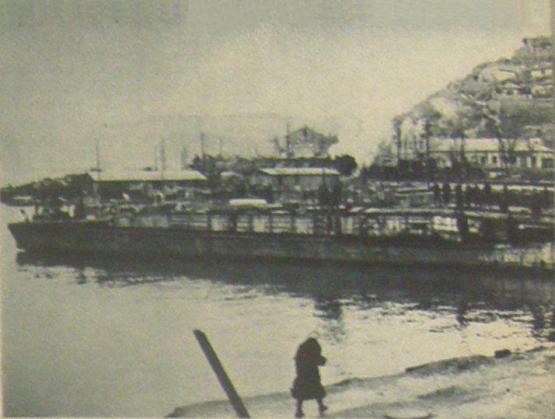
Also the MTF German Navy shipping operations evacuated the last Slovak military units of the 1st Division and its military material to the Romanian port of Constanta from the Crimean ports.
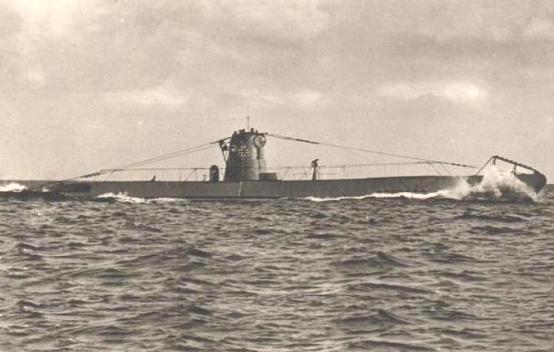
German Navy submarine U 9 sank the Soviet Air Force on August 20 in Constanta Naval Base. For dismantle 9 was transported to the shipyard in Linz partially Compilation and then in tug boat on the Danube port of Galati in the final assembly. Again was put into operation on October 28, 1942. She worked from a German submarine base in the port of Constanta. In the years 1941-1944 was Moldova (Bessarabia) in Danube ports of Reni again affiliated to the Kingdom of Romania. After the takeover of power by King Mihail I. August 23, 1944 in Romania, the German part of the Black Sea navy he retreated into the Danube River, part sunk by own crew on the high seas and in ports of Varna and Constanta. The emergency service took nine of the Soviet Black Sea navy already on October 22, 1944. Due to lack of capacity of the dock was placed in shallow water. In late March 1945, docked in Constanta and then to be repaired in the port of Nikolayev. The Soviet fleet in Sevastopol served under the name TC-16 as a training vessel since October, 1945.
King Mihai I. Romanian on August 23, 1944, with the Allied Slovak Army on August 29, 1944, the armed expedition against the German Empire was shortened by II. world war for at least 6 months, saved hundreds of thousands, maybe millions of lives. Events of SPD Employees A.C. it was not surprising that a significant part of its professional elite cooperated with the SSI since 1921 (until 1940, its director was the son of the Orthodox priest of the old faith Mihail Moruzov, subsequently by its director Eugen Cristescu in March 1945), as well as the Czechoslovak military intelligence service /the staff 2nd department was Lt. colonel František Moravec), after the case of the Slovak Military Intelligence Service (Head of the 2nd Command of the Headquarters Major infantry Alojz Androvič) still in the ranks of ČPSD AC employees.
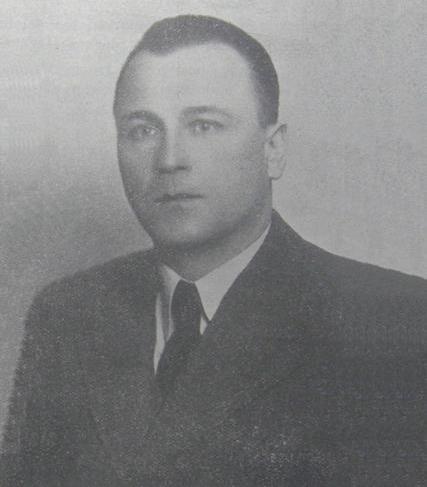
Former Nitra comes, after 29th August 1944 Minister of National Defense Cpt. infantry reserve Štefan Haššík from the Dlhé Pole. Until May 8, 1945, the Slovakian Danube River Shipping Company was also subject to German leadership. It controlled all Danube shipping companies (until 23 August 1944 NFR and until 5 September 1944 BRP) and ensured their use of cargo no matter who belonged and to which the port was designated. Thus the delays were eliminated and for the purposes of the German war economy the maximum capacity of the ship\'s cargo space was used.
Under reduced visibility at the beginning of October 1944, the RAF carried out a 19th event of the Danube mining action. Landmasters announced the conversion of 31 naval mines between the port of Bratislava and the port of Štúrovo (1866-1728). Two mines destroyed Minensuchgruppe 1 (Minensuchgruppe Mausi) at km 1840 and two km 1826.
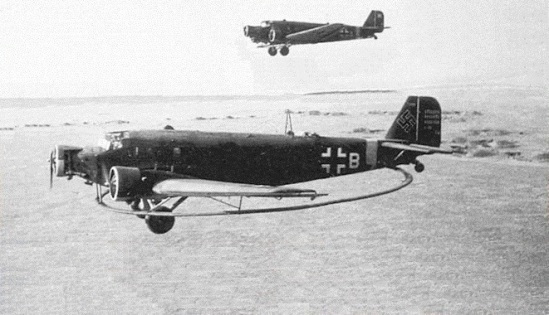
In the village Baka at Danube km 1826, Junkers Ju 52/3m (MS) crashed due to the explosion of activated mines. The four men of the crew perished. From Bratislava to Budapest there was interrupted shipping.
On October 15, 1944, the enemy of the Slovak and Romanian Army against the Wehrmacht was already forced to react to their enemy from 1938-1939, regent Miklós Horthy, to an unsuccessful attempt to exert Hungary from the war. The coup in Hungary and its occupation by the Wehrmacht limited only the possibilities of fighting the Slovak Army (1st Czechoslovak Army), the unspeakable situation of the German troops in the Balkans could not be saved. Remnants of the undeniable impact of the former SSI on older employees of the ČSPD National Enterprise (SPD a.s.) were clearly visible in the year 1977.
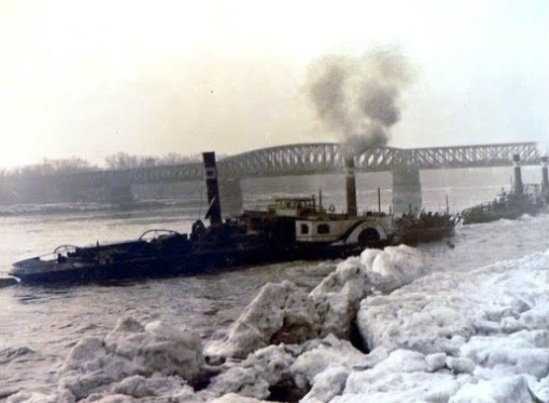
At km 2120 next Abwinden-Asten, in 1944, a steamed tug R-VI of the shipping company Slovak Dunajplavba SPD A.C. (former steamer Sázava of ČPSD) was damaged by the bombing.
After the liberation of Bratislava, on April 4, 1945, the Consul of the Swiss Confederation in Slovakia, Hans Keller, personally thanked the City Hall of the General Marshal attorney Dr. Štefan Ravasz for the proven services of his country.
Until September 1945, the units of the Romanian Royal Army were deployed in Slovakia, namely in Piešťany, Nitra, Trenčín and Trenčianske Biskupice.
On September 8, 1946, the free flow of the Danube at the village Číčov on the rkm 1801 was damaged by the hinge of a steam tug ČSPD Liptov.
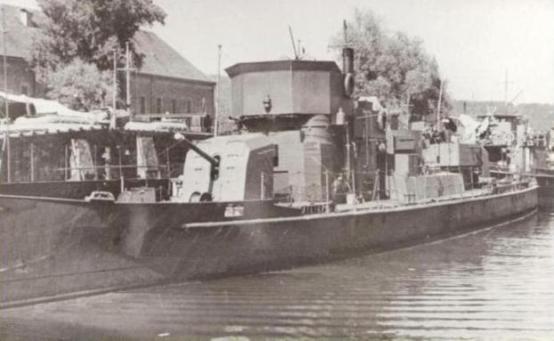
In 1947 the patrol ship "President Masaryk" was returned to the Czechoslovak Republic. In 1947 the vessel was returned to Czechoslovakia. Authors educator in ČSPD National Enterprise Bratislava, participating Cpt. Pavel Zongora noted that during the tests Czechoslovak Army for shipping more than half the power of the free flow of hull and enforce pushing a wave, which damaged the Danube embankment. It was found insufficient efficiency rudders, besides cold rudder require excessive force. The crew tried to conceal his condition before the Military Technical Commission in deck hand by helping the helm. The Commission did not recommend inclusion feared (despite its structural compromises) warship (They feared the crews of the enemy and in the Danube Delta since 1941 and reportedly the coastal waters of the Black Sea) to service the technical condition and the 1947 non-compliant construction.

Until the seventies of the 20th century divers were working on the Removal of the Wrecks WW2. War of the Czechoslovak section of the Danube River.
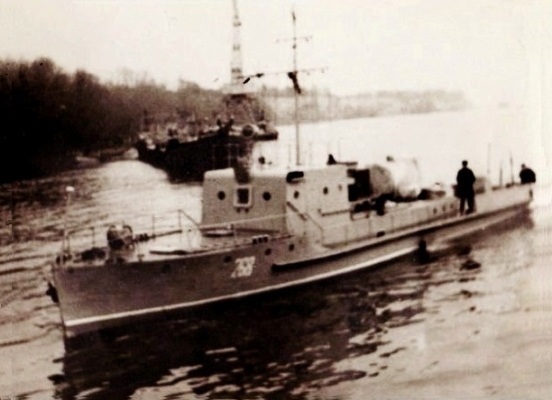
War ship "ВРД-268" from soviet Dunube fleet (former armoured riverine minelayer OMm 36 from Czechoslovak Dunube fleet) pri záchranných prácach on river Danube in sewenty years 20. century. Armament: In Romanian service: 1 x 20 mm Oerlikon AA gun, 6 x 8 mm machine guns (2x2, 2x1), 22 mines.
Explication: ČSPD N. E. successor company Slovakian Dunajplavba joint stock company, Bratislava, Grossling 47. Mr. Ing. Vladimir Droppa was its CEO, Chairman of the Board, Mr Dr. Belo Kováč, chief mayor of Bratislava ; Motor towing remorquer ČSPD Tatry was built in year 1965 shipyard SLK Komárno. His crew accommodation spaces were adequate at that time. The size was only average performance engines Škoda 6L 350 reliable, long-lasting. Maneuverability was also just average. The cost of repair, maintenance and low fuel. It can be noted that the tug is proved. Since 1982 he has been compared pusher difficult for crew members. In the context of deteriorating water quality in the Danube did not reflect the quality of potable water hygiene requirements. For poor health was commander Cpt. Alexander Oberta (worked on the Danube ships from 1938) renounced functions Commander MTR ČSPD Tatry, but few can compete with his master, because he preferred to obey.
Notes: In 1939 the commander of the military group "Michalovce", from September 1944 to May 1945 the Minister of National Defence Stefan Hassik was originally officer to k.and k. *25.november 1898 Dlhé Pole † 24.júl 1985 Cleveland, USA ;
Sources: Danube helmsman Messing, tank barge T-V of ČSPD N.C. ; Danube Captain Alexandert Oberta, ČSPD N.C. ; Danube Captain Haššík, ČSPD N.C. ; Peter Simeonov ; konsul Hans Keller 1939-1945 ; Náš Dunaj ;
Donau - Dunaj - Duna - Dunarea ; ♫ Ajde Jano kuću da nedamo ;


 back
back 
